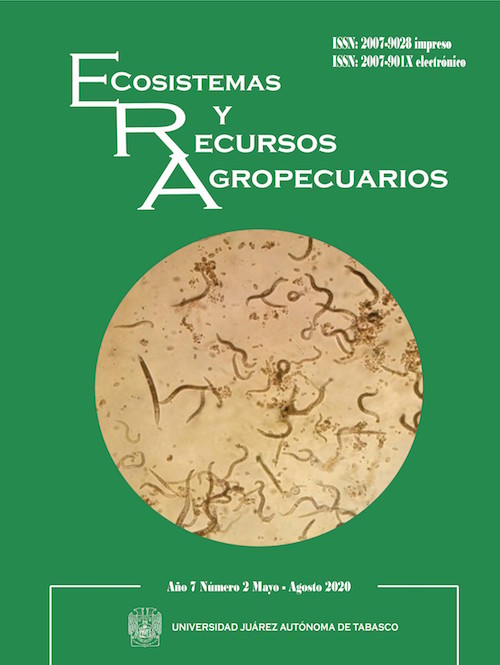Body mass index and body chemical components in Pelibuey ewes
DOI:
https://doi.org/10.19136/era.a7n2.2515Palabras clave:
sheep body composition, body condition, body energy status, body measurementsResumen
The present study determined the relationship between body mass index (BMI) and chemical components in Pelibuey ewes. The BMI was determined in 28 ewes. At slaughter, internal organs and blood were weighed, then were mixed and grounded. The half-carcasses were dissected into subcutaneous and intermuscular fat, muscle, and bone. The muscle and fat of each animal were ground together, and one sample of the mixture was taken. The carcass and viscera samples were freeze-dried and further analysed for crude protein (CP), fat (F), and ash (A). The relationship between BMI and body composition were estimated using correlation coefficients (r) and regression models. The r between BMI and carcass crude protein and visceral crude protein were 0.51 and 0.48, respectively (p < 0.001), and between BMI and carcass F and visceral F were 0.82 and 0.71,respectively (p < 0.0001). The r2 of the models relating to BMI and body chemical components ranged from 0.62 to 0.97. There was a quadratic relationship between total body CP, and A. The chemical carcass components (CP, F, and carcass energy [CE]) showed a linear relationship with BMI, with an r2 ranging from 0.67 to 0.96. It was concluded that BMI could be used as predictors of body chemical composition in non-pregnant and non-lactating Pelibuey ewes. The use of empty body weight for calculating BMI yielded more accurate estimates of the chemical components of the body of adult sheep.Descargas
Descargas
Publicado
Número
Sección
Licencia
1. Política propuesta para revistas de acceso abierto
Los autores/as que publiquen en esta revista aceptan las siguientes condiciones:
1. Los autores/as conservan los derechos de autor y ceden a la revista el derecho de la primera publicación, con el trabajo registrado con la Licencia CC BY-NC-ND 4.0 Creative Commons Attribution-NonCommercial-NoDerivatives 4.0 Internacional de Creative Commons, que permite a terceros utilizar lo publicado siempre que mencionen la autoría del trabajo y a la primera publicación en esta revista.
2. Los autores/as pueden realizar otros acuerdos contractuales independientes y adicionales para la distribución no exclusiva de la versión del artículo publicado en esta revista (p. ej., incluirlo en un repositorio institucional o publicarlo en un libro) siempre que indiquen claramente que el trabajo se publicó por primera vez en esta revista.
3. Se permite y recomienda a los autores/as a publicar su trabajo en Internet (por ejemplo en páginas institucionales o personales) antes y durante el proceso de revisión y publicación, ya que puede conducir a intercambios productivos y a una mayor y más rápida difusión del trabajo publicado (vea The Effect of Open Access).
![]()
This work is licensed under CC BY-NC-ND 4.0


